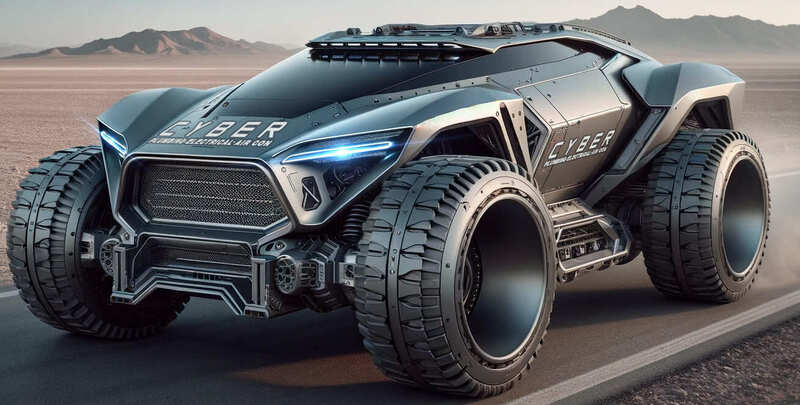
What is Gas Ducted Heating and How Does It Work?
Gas ducted heating, also known as ducted gas heating, is a whole-house heating solution that offers uniform warmth in every room.
This heating system operates by drawing air through a heat exchanger, where it’s warmed using gas combustion, then distributed via ducts in the ceiling or floor. Unlike single-room heaters, a ducted gas heating system ensures consistent temperature control, enhancing heating comfort and efficiency across the entire house.
The core of the gas ducted heating system is the gas heater unit, often installed in the roof space or an external area of the home. This system not only delivers warm air but, with add-on cooling, can also provide cooling for year-round comfort. The efficiency of ducted heating is a standout feature, with different star-rated heaters based on their energy consumption and effectiveness in reducing energy bills.
With advancements like zone control and next-generation controllers, gas ducted heating installations have become more energy-efficient, adapting to outside temperatures and house size, thus using less energy.
This adaptability means lower running costs and reduced electricity use, making ducted gas heating an attractive option for sustainable house heating.
Understanding the Different Components
A gas ducted heating system is composed of several key components that work in harmony to provide efficient and uniform heating throughout the entire house.
At its heart is the gas heater, powered by natural gas, known for its energy efficiency and lower running costs compared to electric heating units.
- Gas heater unit: The gas ducted heater, often located in the roof or outside the house, serves as the central heating unit. Using gas, it generates heat through gas combustion, making it a cost-effective solution due to the generally lower gas prices.
- Heat exchanger: This component within the gas heater warms the cold air drawn into the system, ensuring efficient heat transfer and minimal energy loss.
- Ducts and vents: Ducted heating systems have a network of ducts installed in the ceiling or floor, distributing the warm air from the gas heater to various rooms. The layout and design of the ductwork are crucial for optimal energy efficiency and heating performance.
- Thermostat and control system: Temperature settings are managed through a thermostat or next-generation controller, allowing for precise temperature control throughout the house. Modern systems offer zone control, enabling different heating settings for various areas, optimising comfort and reducing energy use.
- Add-on cooling: Many ducted gas heating systems can integrate add-on cooling, providing reverse cycle air conditioning. This feature makes it a versatile all-year-round heating and cooling solution, using just one system for both functions.
- Energy efficiency and star ratings: Ducted gas heaters are rated for energy efficiency, with star ratings indicating how effectively they use energy to heat air. Higher star-rated heaters consume less electricity and natural gas, leading to lower energy bills and reduced environmental impact.
Incorporating these components into a ducted gas heating installation ensures a system that is not only effective in keeping the home warm but also adheres to energy efficiency standards, potentially lowering heating costs and offering a reliable heating and cooling solution.

How Gas Ducted Heating Works
Gas ducted heating is an efficient whole-home solution that ensures a comfortable temperature throughout various spaces, regardless of outside temperature changes.
Here’s how the system operates:
- Ignition and heat generation: When the thermostat signals a need for heat, the gas ducted heater’s ignition system activates. Natural gas flows into the combustion chamber, where it ignites, producing heat. This process is energy efficient, keeping running costs manageable despite fluctuating gas prices.
- Heat exchange: The generated heat warms the air passing over the heater’s heat exchanger. This crucial component ensures that the air inside the ducted heating system is heated quickly and efficiently.
- Air distribution: Once heated, the warm air is pushed through a series of ducts installed beneath the floor or above in the ceiling. These ducts distribute the heated air evenly across the entire house, ensuring consistent warmth in all rooms.
- Thermostat control and zoning: The system’s thermostat monitors the temperature, making adjustments to the heater’s output to maintain the desired comfort level. Advanced systems offer zoning capabilities, allowing different areas of the home to be heated to specific temperatures, enhancing the system’s overall energy efficiency and reducing heating costs.
- Cooling integration: Some gas ducted heating systems include integrated cooling, functioning as an air conditioning unit during warmer months. This dual functionality makes it a comprehensive heating and cooling solution, installed as one cohesive system.
Through this methodical process, gas ducted heating provides a reliable, energy-efficient way to maintain a consistently warm and comfortable environment in every room of the home.
Advantages of Gas Ducted Heating
Gas ducted heating offers several benefits, making it a preferred choice for whole-home comfort:
- Uniform heating: Gas ducted heating provides consistent and even heat distribution throughout the entire house. This eliminates cold spots and ensures a comfortable living environment in every room.
- Cost-effective: Despite fluctuating gas prices, ducted gas heaters often have lower running costs compared to other heating methods. With advanced testing methodology and high star ratings, these systems are designed to be energy efficient, reducing both energy prices and overall heating expenses.
- Control and flexibility: With the installation of a ducted heating system, homeowners gain precise control over their heating needs. Systems with zone control allow heating of selected areas, further reducing energy use and costs.
- Improved air quality: Gas ducted heaters, particularly new models, are designed to reduce dust and allergens in the air, which can result in better indoor air quality compared to other heating systems.
- Seamless integration: Gas ducted heating installations are discreet, with the ducts and heater unit hidden away, preserving the aesthetics of the home. Additionally, many systems offer integrated heating and cooling, providing year-round comfort without the need for separate units.
Installation and Maintenance
The installation and upkeep of ducted gas heaters are critical for ensuring their efficiency and longevity:
- Installation process:
- Assessment: Initially, a professional assessment determines the house’s heating requirements, considering size, insulation, and layout.
- Designing the system: Tailoring a heating system with the appropriate star rating and capacity ensures optimal performance and energy efficiency.
- Installation: A qualified technician installs the gas ducted heater and ductwork strategically to provide whole-house heating. This process might involve placing the main unit in a roof space or an external location, with ducts running to various rooms.
- Running costs and efficiency: Investing in a higher star-rated gas ducted heater can lead to lower running costs, despite the initial gas price. Energy-efficient units consume less fuel and convert more heat, enhancing cost-effectiveness.
- Maintenance:
- Regular maintenance: This is crucial to keep the heating system running smoothly. This includes checking and cleaning filters, ducts, and the heater itself to ensure optimal performance and prevent costly repairs.
- Sales service: Reputable suppliers often offer after-sales service, providing maintenance and support for the new heater to ensure it remains in top condition.
- Heating and cooling integration: Many ducted gas heaters can be integrated with air conditioning systems, offering a complete heating and cooling solution. This integration requires careful planning during the installation phase to accommodate both systems efficiently.
By adhering to these guidelines, homeowners can enjoy a seamlessly functioning, energy-efficient heating system that provides consistent warmth throughout the home.
Choosing the Right Ducted System
Selecting an appropriate ducted gas heating system is pivotal for ensuring effective and efficient heating throughout your home. Here are factors to consider:
- Assess your heating needs: Evaluate the size and layout of your home, including ceiling height and insulation quality. A larger or poorly insulated home may require a more powerful heating system.
- Consider the star rating: Energy efficiency is denoted by the star rating; higher ratings signify more efficient fuel use and lower running costs. Opting for a system with a high star rating, even if it’s above one star, can mean significant savings in the long term.
- Type of gas heater: Choose between different types of ducted gas heaters, such as conventional or condensing units. Condensing heaters, although more expensive, offer better efficiency and lower greenhouse gas emissions.
- Installation requirements: Consider the logistics of installing the heating system, including the placement of ducts and the heater unit. The gas ducted heating installation should align with your home’s structure and heating requirements.
- Integration with cooling systems: If you desire both heating and cooling, look for systems that can integrate with air conditioning. This ensures a unified solution for year-round comfort.
Selecting the right ducted gas heater involves balancing upfront costs with long-term benefits in terms of energy efficiency, comfort, and heating. Proper assessment and professional guidance are key to installing a system that suits your home’s specific needs.
The Future of Gas Ducted Heating
Gas ducted heating offers an efficient, cost-effective, and reliable solution for whole-house warmth. With its ability to provide consistent heating and integrate with cooling systems, it stands out as a versatile choice for homeowners.
Looking ahead, the future of gas ducted heating is promising, with technological advancements aimed at improving energy efficiency and reducing environmental impact.
Innovations like smart thermostats, more efficient heat exchangers, and sustainable fuel alternatives will enhance the performance and eco-friendliness of these systems.
As energy prices and environmental concerns continue to drive demand for efficient heating solutions, gas ducted heating is poised to evolve, offering smarter, greener, and more adaptable options for residential heating.
Please note: This information is provided for advice purposes only. Regulations differ from state to state, so please consult your local authorities or an industry professional before proceeding with any work. See Cyber Air Conditioning’s Terms & Conditions here.
